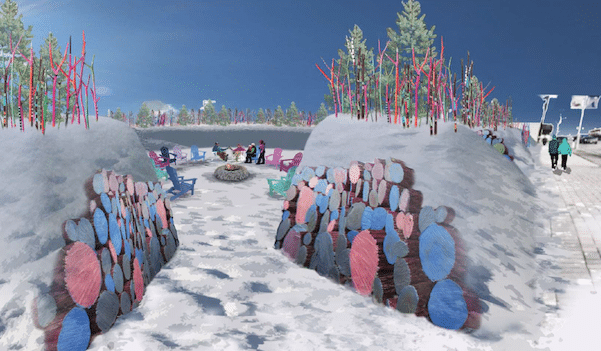All communities face unique challenges in providing equitable opportunities to physical activity, but a common challenge for many communities in B.C. is the long winter season. One way some communities are working to embrace winter and create opportunities for physical activity during the season is through Winter City Design guidelines.
In 2017, Fort St. John, a city of 21,000 in Northeastern B.C., reinvigorated a longstanding ambition to become a “winter-ready leader” in Canada. This involves implementing “micro-projects” to improve opportunities for winter physical activity with smaller, more attainable goals. The micro-project ideas are part of the $475,000, five-year Winter City Strategy the City launched to embrace the challenges the colder months can bring.
“We are from the North, we get winter, but there’s not a lot of point in not recognizing or not celebrating that fact,” says Ryan Harvey, communications coordinator for the City of Fort St. John. Still, despite all the ways the city has to enjoy the snow, Harvey acknowledges that getting out to enjoy winter can be challenging for residents of different ages and abilities—especially for those who may have difficulty leaving their homes.
“We got a message the other day from some residents who couldn’t get out of the house because their sidewalks hadn’t been cleared,” he says.
One example of a related micro-project and a way to build “Winter Citizenship culture,” Harvey highlights, is the city’s efforts to recognize community members for shoveling the sidewalks. The City’s by-law officers celebrate those residents with friendly competition— giving out city-branded gloves and scarves to those “winter citizens” helping to reduce barriers to walking in the snow.
Jacob Cramer, researcher at BC Healthy Communities, commends the efforts the City of Fort. St. John is making to ensure equitable access to physical activity. Part of Cramer’s role is to help local governments understand how their policies and infrastructure impact the health and well-being of their residents.
“The benefits of physical activity for health are well-established, but these benefits are only a part of what makes this initative valuable,” says Cramer. “Equitable access to physical activity and recreation services also serve to lower barriers and facilitate residents spending more time outdoors and engaged in social interaction. These interactions, with nature and in social settings, have positive effects on mood, stress and trust levels; simultaneously encouraging positive mental and social wellness.”
The importance of the micro-projects introduced through Fort St. John’s Winter City Strategy is the diversity in opportunities so that the city is able to meet a variety of needs, schedules and family dynamics, she points out. And the City plans to do just that. This past January, Fort St. John hosted the 2019 Winter Cities Shake-up Conference—a conference that brought in experts to exchange ideas on winter design, business and fun. Future plans include building on ideas like leaving exterior lights on at night, installing community fire pits and warming huts to make it easier for residents to enjoy the cold temperatures. Projects are led by community groups and the city, or in partnership.
As for Harvey, he remains optimistic about citizens being able to enjoy the sometimes-chilly temperatures: “like some like to say, it’s not bad weather, it’s bad planning and bad clothing.”




